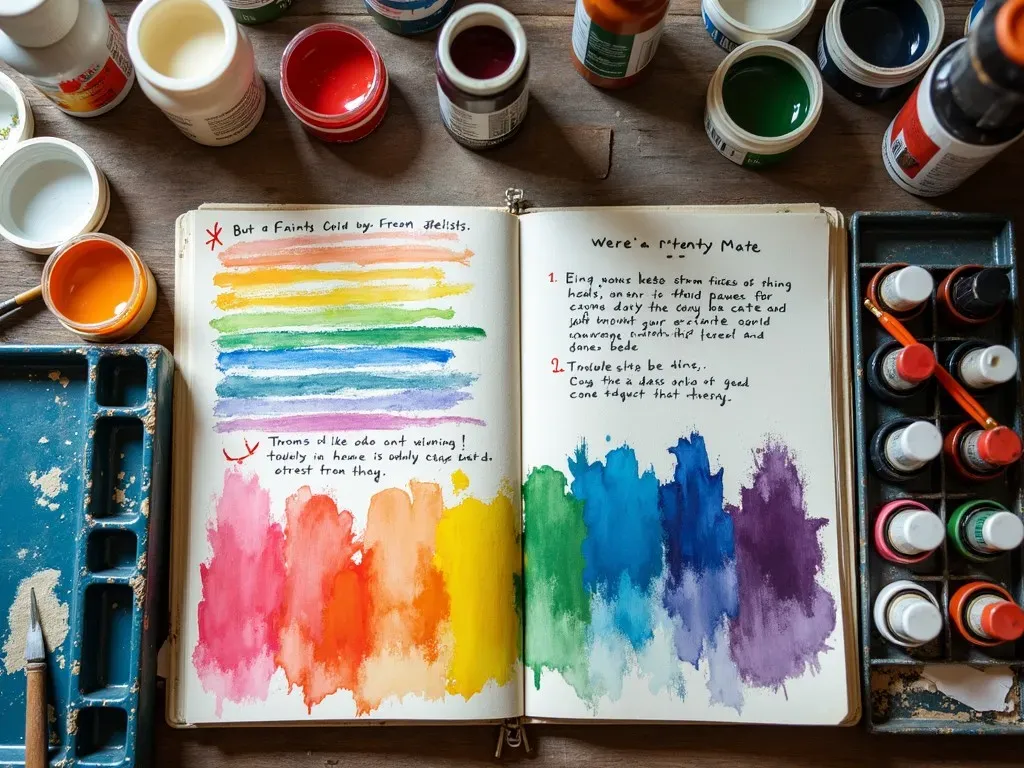Mixing oil paints is a fundamental skill for any aspiring artist. This technique allows you to create a diverse palette that can enhance your paintings. Understanding how to blend oil colors not only improves your artistic expression but also helps you mimic various tones, shades, and textures with precision.
The Basics of Mixing Oil Paints
When beginning your journey in mixing oil paints, it’s essential to grasp a few foundational concepts. The process involves not just the blending of colors but also understanding the properties of the mediums involved.
The basic color theory comprises primary, secondary, and tertiary colors:
- Primary Colors: Red, Blue, Yellow
- Secondary Colors: Green, Orange, Purple (formed by mixing two primary colors)
- Tertiary Colors: Combinations of primary and secondary colors.
Here’s a simple table to illustrate the relationships:
| Color Type | Colors Included |
|---|---|
| Primary | Red, Blue, Yellow |
| Secondary | Green (Blue + Yellow), Orange (Red + Yellow), Purple (Red + Blue) |
| Tertiary | Yellow-Green, Blue-Green, Red-Orange, etc. |
Essential Tools for Mixing
Before you start mixing oil paints, make sure you have the right tools:
- Palette: A flat surface for mixing colors. Wooden or glass palettes work well.
- Palette Knife: Ideal for mixing paint and can create unique textures.
- Brushes: Various sizes help in achieving different strokes and Techniques.
- Mediums: Linseed oil, turpentine, and other mediums modify the paint’s consistency and drying time.
Popular Mediums for Mixing
| Medium | Purpose |
|---|---|
| Linseed Oil | Gives a glossy finish and slows drying time. |
| Poppy Oil | Ideal for bright colors as it won’t yellow over time. |
| Turpentine | Thins paint and speeds drying time without altering color. |
For a more detailed guide on the mixture and quality of oil paints, you can refer to the article on Cowling & Wilcox.
Techniques for Mixing Oil Paint Colors
1. Direct Mixing
This straightforward method involves combining colors directly on your palette. It’s often the easiest way to achieve the desired shades. Remember to start with a small amount of each color; you can always add more!
2. Layering
Layering involves painting one color on top of another, allowing each layer to dry before adding the next. This technique can create depth and richness in your work.
3. Glazing
Glazing consists of applying thin, transparent layers of color over dried paint. This method enhances tonal variation and can produce luminous effects in your artwork.
4. Scumbling
This involves applying a thin, opaque layer of lighter color over a darker base. The technique can soften hard edges and create interesting textures.
5. Wet-on-Wet
Also known as alla prima, wet-on-wet painting involves applying wet paint onto wet paint. This technique allows for blending colors on the canvas, which can produce softer transitions.
Mixing for Specific Effects
Color Temperature
When mixing oil paints, be mindful of color temperature:
- Warm Colors: Red, Orange, Yellow — these advance in a painting.
- Cool Colors: Blue, Green, Purple — these recede.
Understanding color temperature helps create a sense of depth and distance in your artwork.
Saturation
Saturation refers to the intensity or purity of a color. Mixing colors can dilute saturation; thus, understanding how to create vibrant mixes is key.
A simple list of tips for maintaining saturation:
- Use pure colors directly from the tube.
- Limit the number of colors you mix to prevent dulling.
- Use a small amount of neutral color to slightly tone down without losing intensity.
Troubleshooting Common Mixing Mistakes
-
Mud: This is when colors become muddy or dull. This usually happens when too many colors are mixed or when mixing complementary colors.
-
Over-thinning: Using too much medium can weaken the pigment. Always aim for a balanced mixture.
-
Dried Layers: If previous paint layers dry too hard, avoiding the wet-on-wet technique might be necessary, as new paint won’t adhere properly.
Quick Fixes
| Problem | Solution |
|---|---|
| Muddy colors | Limit color blends and clean your palette. |
| Over-thinned paint | Add more pigment to bring back color strength. |
| Dried paint layers | Use a soft brush to gently rework or scrape the top layer. |
Advanced Techniques and Resources
For artists looking to go deeper into the science of mixing oil paints, consider exploring advanced techniques, such as using the color wheel for better color harmony or experimenting with various textures using the right mediums. Videos on platforms like YouTube provide excellent tutorials, such as Color Mixing with Oil Paints: All You Need to Know or Oil Paint Mixing Guide – Understanding The Process.
Frequently Asked Questions
Q1: What’s the best oil medium for beginners?
A: Linseed oil is often recommended as it is versatile and easy to work with for most painting techniques.
Q2: How do I achieve pastel colors with oil paints?
A: To get pastel colors, mix white with your chosen colors to lighten them while maintaining their hue.
Q3: Can I mix oil paint with acrylics?
A: Generally, it’s not recommended to mix oil and acrylic paints directly as they have different drying properties and compositions.
Q4: How should I store mixed oil paints?
A: Store mixed paints in airtight containers to prevent them from drying out. Even saran wrap over your palette can help!
By mastering the art of mixing oil paints, not only will you enhance your palette and artistic expression, but you will also develop a deeper understanding of color interactions, leading to more dynamic and compelling artworks. Happy painting!
